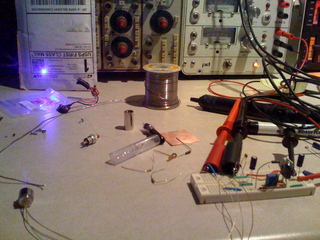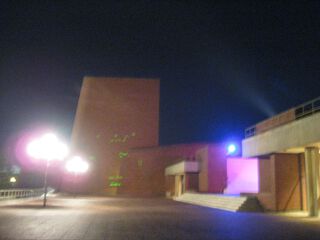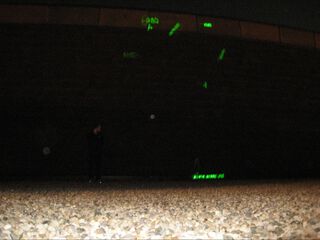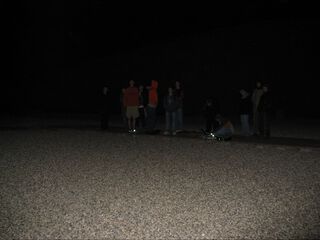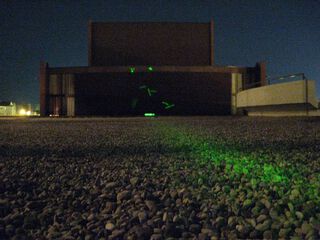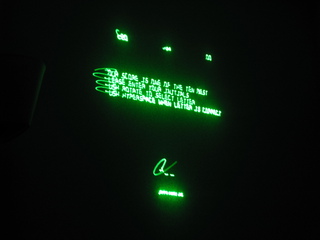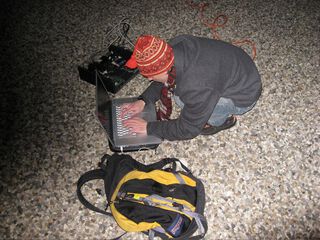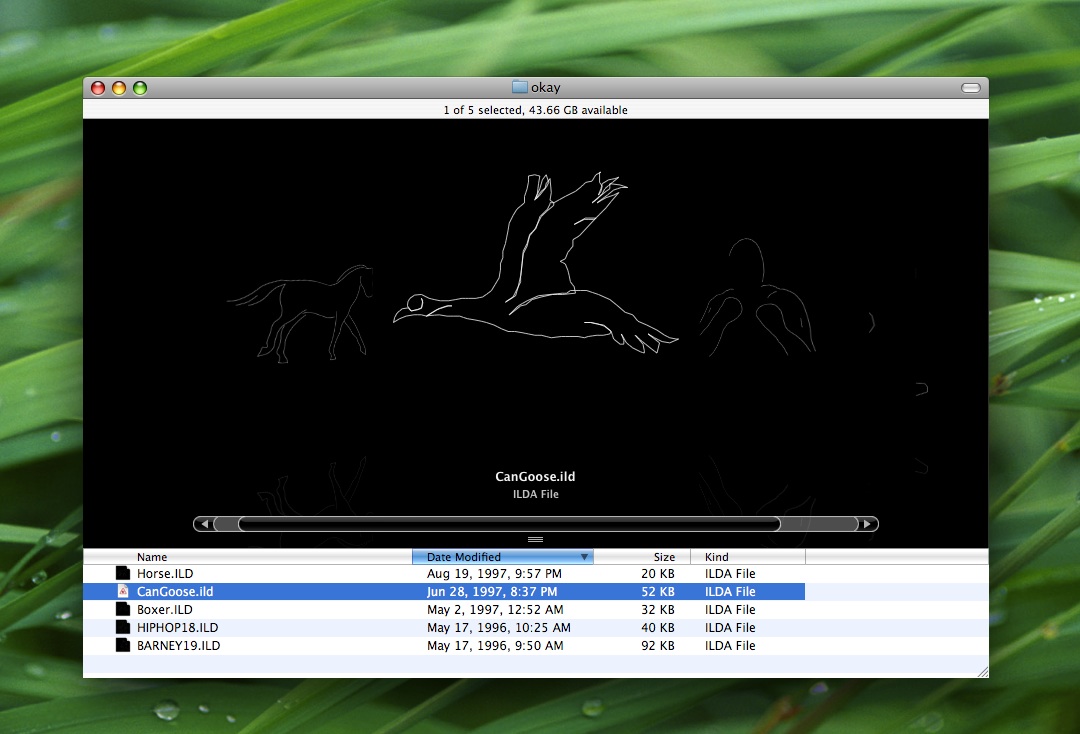PS3 Blu-Ray Laser Diode
As if I didn't already have enough going on this week, I just did this:
Parts were approximately $60, using the PS3 replacement drive assembly and other recommended items from various how-tos on the Internet. Essentially, the diode is removed from the disc assembly, installed in an old 5mw red laser housing, and connected to a brand new LM317 based power supply. I am well on my way to building an adorable little blue laser pointer for far under $100. It is really more purple than blue, but it looks pretty cool. Right now I'm still too afraid to crank up the juice to see how bright it can get.
According to some random forum post:
lasing threshold: 27-28ma
working current/voltage: 4.4v @ 30-40ma
output:
30mA 2.68mW
35mA 9.45mW
40mA 13.3mw
45mA 17.0mW
I can at least verify the lasing threshold was accurate--I do not have the appropriate equipment to measure power output.
And of course, I couldn't have done it without information from Sam's Laser FAQ, specifically the article examining Blu-Ray Laser Diodes.
Nuage Vert
Last fall I was contacted by Heiko Hansen (of HeHe) regarding using the EasyLase USB on the Mac. I must say I was quite intrigued when I found out that he was working on Nuage Vert, a visualization of energy usage in Helsinki. The project uses the cloud of emissions from the Salmisaari power plant as a canvas to demonstrate how much energy is in use by the city.
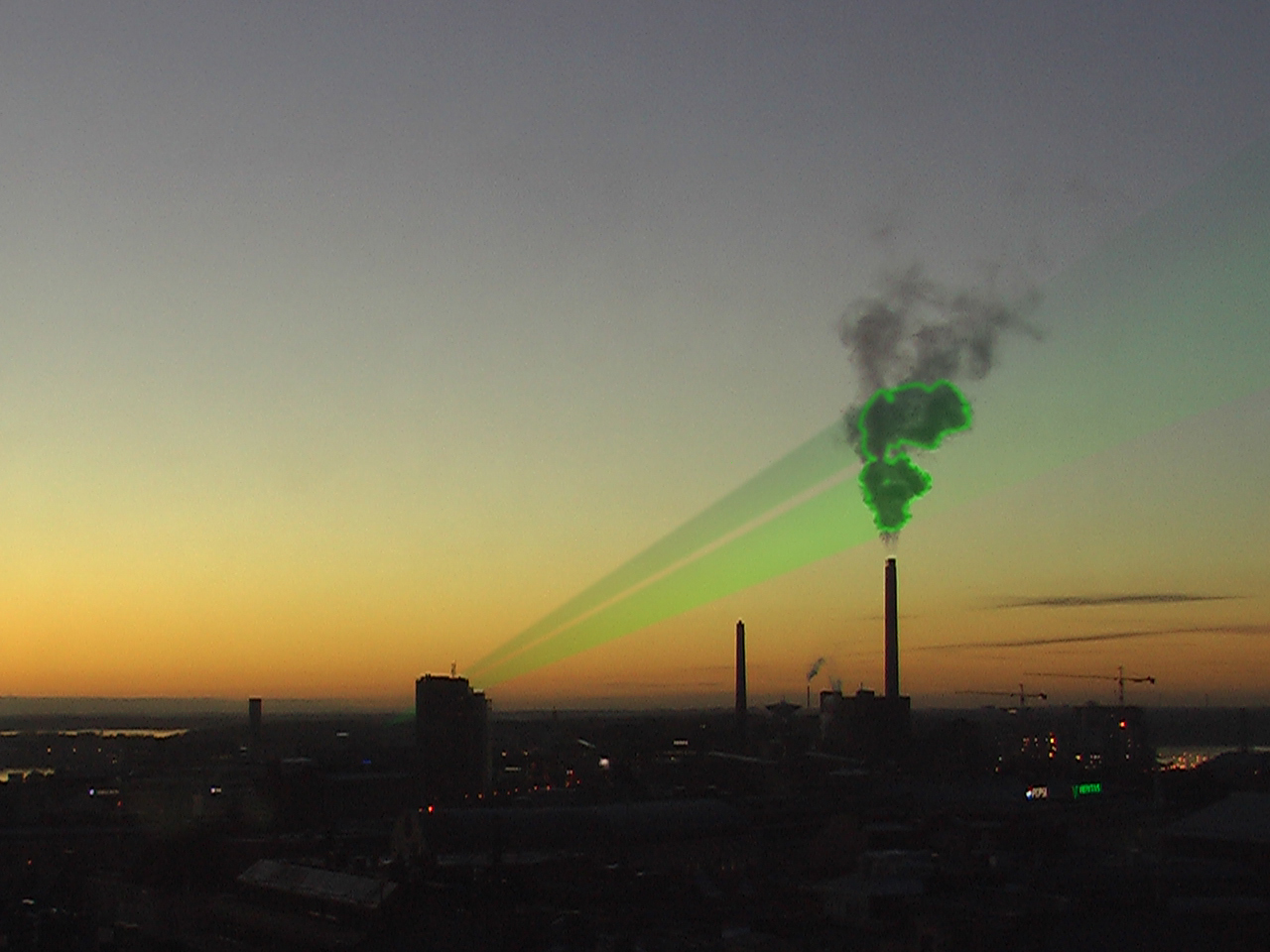
photo credit HeHe
The project is going on display February 22-29, 2009 in Helsinki. I encourage you to go check it out more in depth at www.nuagevert.org.
For the project, I ended up creating a Java wrapper for the libEasyLase driver for OS X. It is now possible to get laser output on the EasyLase USB from inside a Java app on the Mac. Please contact me if you're interested using this.
EasyLase USB Driver for Mac OS X Released
I've finally put together an installer for the EasyLase USB driver for Mac OS X. I am making the driver available for download today, after more than a year of use internally with the LaserLine project as well as the Laser MacMAME and iTunes visualizer projects.
The build is Universal and has been tested on PPC and x86. The installer includes libftd2xx, a necessary library from FTDI. It is working well with libftd2xx version 0.1.3; Version 0.1.0 is the current released version, and I expect FTDI to update this soon.
Please let me know if you're using this driver to access an EasyLase USB on the Mac, I am happy to help with usage and development of laser software on Mac OS X.
Download EasyLase USB Driver v1.0 (Universal) for Mac OS X:
|
libEasyLase.dmg. |
Asteroids! on MacLaserMAME
After a bit of work over Thanksgiving break, I was able to get the laser projecting Asteroids well enough to play. I apologize for the quality of the photos, but we were really interested in large projection, so the beam was dim and my camera didn't capture it especially well.
I was happy to see a number of ACM folk braved the extreme cold weather to play Asteroids on exterior walls at the Krannert Center for the Performing Arts, an excellent venue which I intend on visiting again next Friday, when my good friend Erik will be playing Cello in the last orchestra concert of the semester.
This whole event turned out to be a quite a success with a Hot Cocoa + Helvetica reception afterwards, despite the fact that the software is still mostly a quick hack. I look forward to further development of additional laserware on the Mac.
Now just to write the real optimization code to make it work well... : )
ILDA Quick Look Plug-in
So, when I came home from WWDC this summer, excited about all the new technologies, I quickly got started on a Quick Look Plug-in for ILDA files. I was super excited I quickly got it working, but I couldn't tell a soul due to that NDA thingy. : ( But Leopard is out now, so I can reveal it. It isn't very stable now, mostly due to an out-of-date version of ILDAlib that it is using; but I've added it to the LaserLine source, so anybody with a free afternoon can debug it and add colors and things. The drawing code should be pretty much verbatim to that in ILDAInspector, but it needs error checking and stuff on loading the files. Further, the project should reference the shared code portion of the source tree, not it's own copy of ILDAlib.
subscribe via RSS
